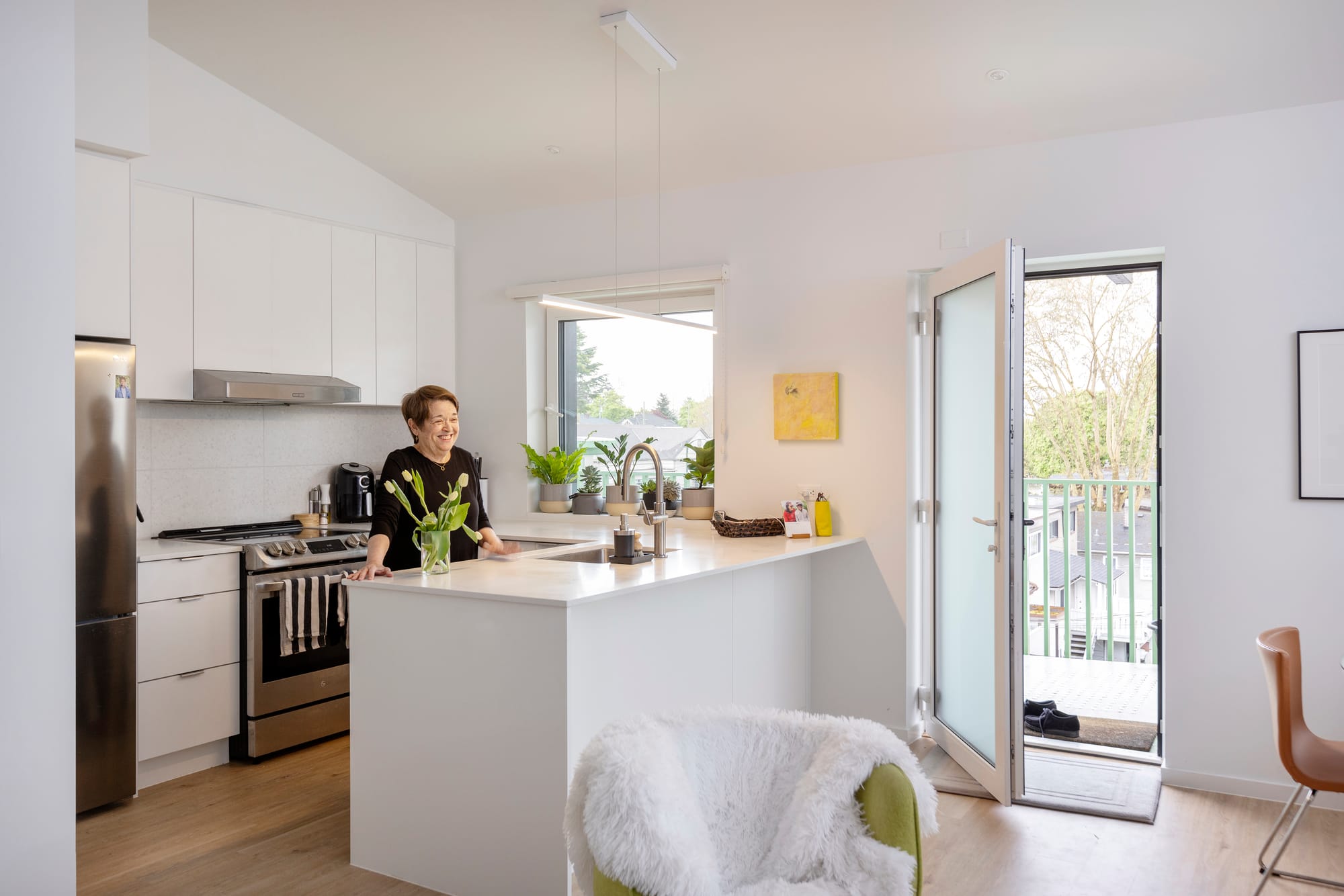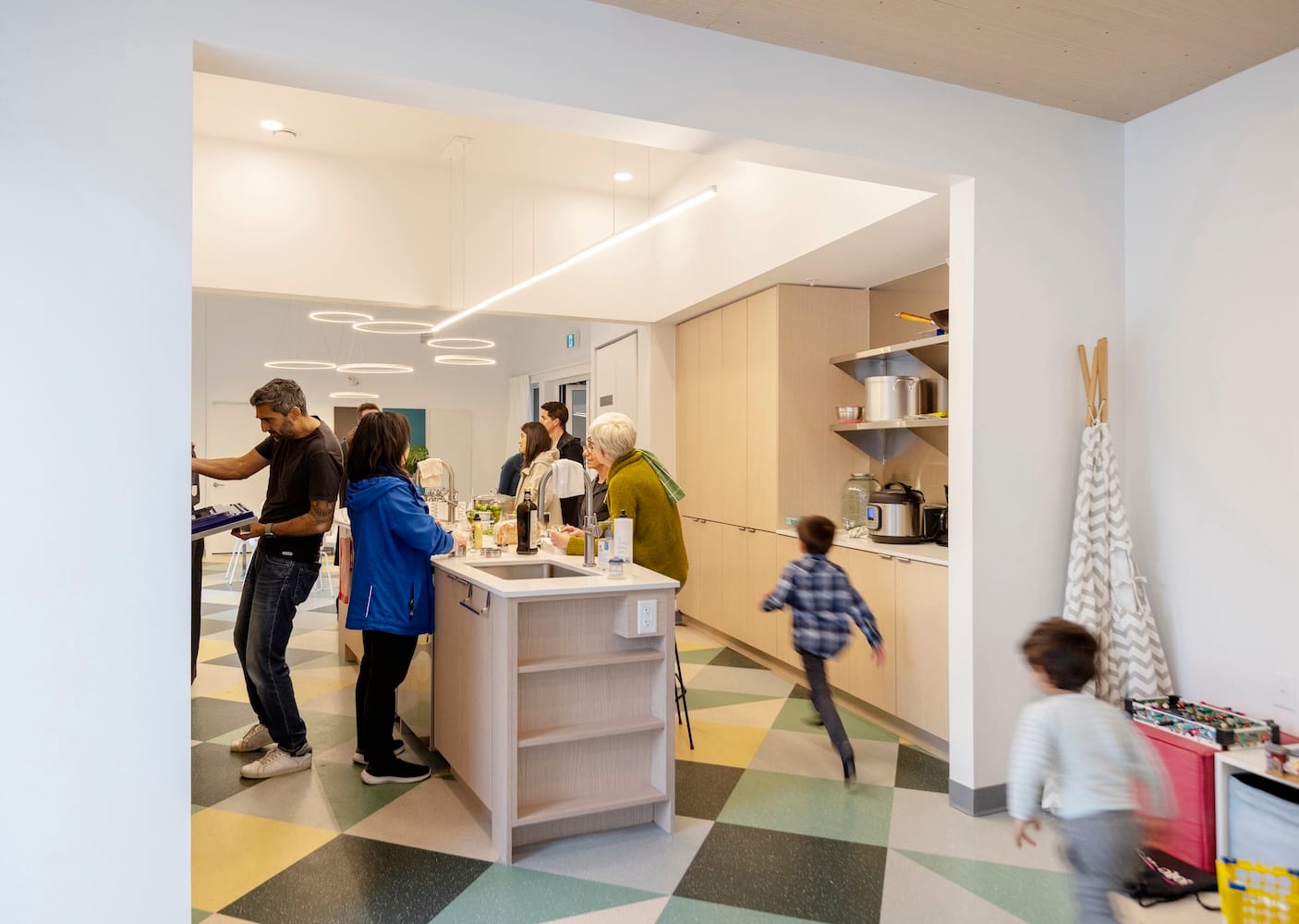
My grandfather, who is getting on in years, has been in and out of the hospital recently. With his mobility issues, his home, a classic “Vancouver Special,” has become a daily challenge. The second-floor living space, once a point of pride, is now a significant physical barrier. It’s a stark reminder that the homes we build should adapt to us, not the other way around. This journey with aging parents and grandparents, its a shared human experience that underscores the importance of learning what can be done to help them live well. For our W11 Kits Quartet, our office discusses building homes that foster both independence and connection while support us and our families as we age.
The Challenge of Aging in Place
For many older adults, the desire to stay in their own homes is strong. However, traditional housing design often presents physical barriers, from stairs and narrow doorways to a lack of accessible features. This can lead to social isolation and reduced quality of life.
Our friends at Happy Cities notes, "For older adults in particular, having a supportive social community can help improve safety, autonomy, physical health, and resilience during extreme weather events." This highlights the dual importance of both the “hard” infrastructure of the home and the “soft” infrastructure of the community. The solution lies in thoughtful design that removes physical barriers and fosters social connections.
W11 Kits Quartet: A Case Study in Barrier-Free Living
Our W11 Kits Quartet project is a real-world example of how we’re putting these principles into practice. The project features four homes on a single lot, with a ground-floor suite with key aging-in-place design features:
One-Level Living: The entire suite is a single-level, ground-floor garden unit, eliminating stairs.
Seamless Transitions: Entryways and walkways are barrier-free to remove trip hazards and ensure smooth movement.
Accessible Design: Wider doorways are used throughout to accommodate walkers and wheelchairs.
Bathroom Safety: Barrier-free, walk-in showers with anti-slip tiles is a central feature, designed to reduce the risk of falls.
More Than a Home: Building a Community for All Ages
But our vision extends beyond the four walls of the home. True aging in place is about staying connected to your community. The W11 Kits Quartet is designed to foster a sense of belonging and mutual support among neighbors, and it even goes as far as providing an intentional framework for multi-generational living.
For many families, the ability to have grandparents, parents, and children living in close proximity is a game-changer. It allows for a beautiful exchange of support across generations. Grandparents can be more involved in their grandchildren’s lives, and adult children can have peace of mind knowing their aging parents are just around the corner. This arrangement can increase the independence of older adults while providing significant stress relief for their children. Our ultimate wish is that a young family with aging parents would move in to multiple units of W11 Kits Quartet, together.
How You Can Foster Connection in Your Community

Creating a supportive community isn’t just for families inhabiting one lot. Its also about getting to know your neighbours and getting involved in your neighbourhood. You can start building connections in your own neighborhood today. Here are a few things we do at Tomo (that you could do too):
Get to know your neighbors: A simple hello can go a long way.
Organize a potluck or a block party: Shared meals are a great way to bring people together.
Start a walking group or a book club: Shared interests can help you connect with like-minded people.
Offer to help a neighbor in need: Small acts of kindness can build strong bonds.
What if our homes could be our partners in aging, not our adversaries? What if our neighborhoods were our safety nets? These are the questions we're asking, and the W11 Kits Quartet is our first attempt at tackling this topic. —EML
